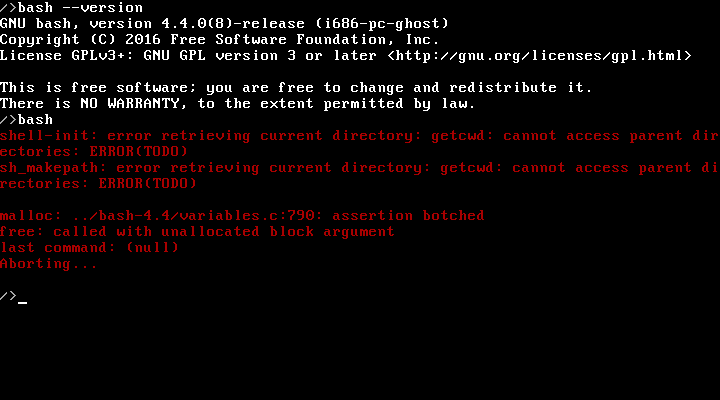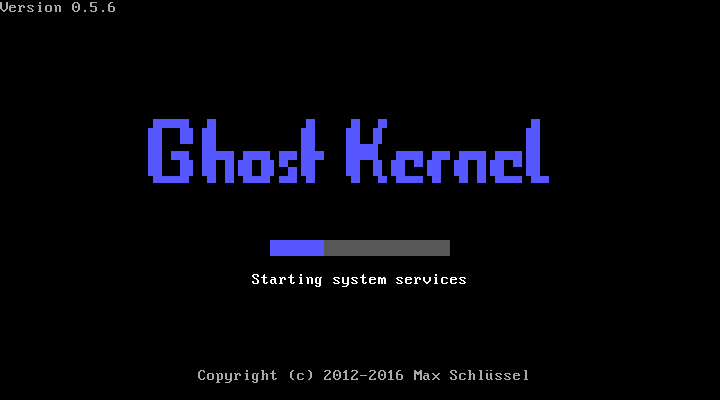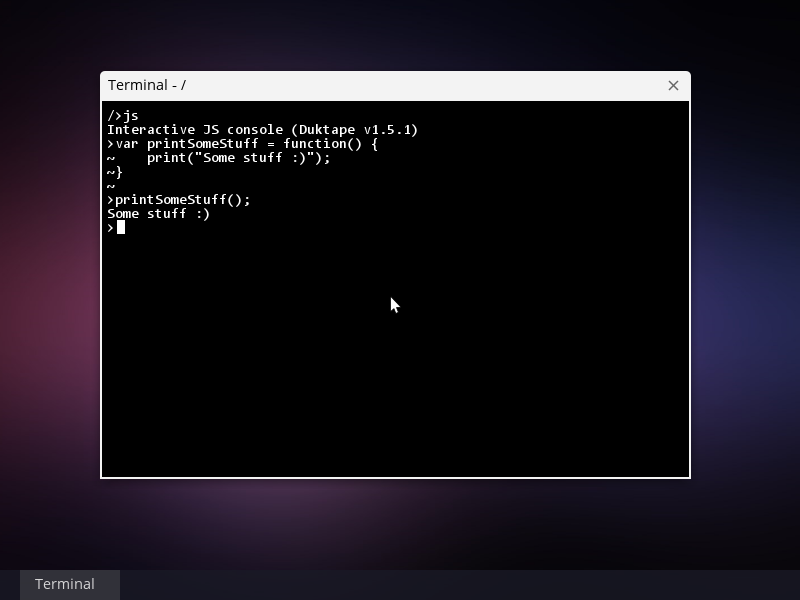Kernel improvements, pretty boot & started porting GNU bash 2017/04/20, 16:33:37
Sources version 0.5.6 are now in the GitHub repository! You can download the current demo file on the download page.
Made some improvements to the kernel and fixed a few minor issues in the libc and libapi. Improved how command line arguments are passed when loading binaries. Previously, the initialization routine running before the user's main function had to parse the arguments - now they are already parsed by gosh (the new Ghost shell) and provided bite-sized to the executable.
Most time was spent finishing the new terminal (that now responds well to escape sequences) and then starting a port of GNU bash. It depends on quite some POSIX/Unix functions that I had to implement/still have to implement to get it running. It compiles well now and tells me its version, but there is still some stuff to do.

Last but not least, I added a fancy boot screen to make it look a little nicer when starting up ;-)

